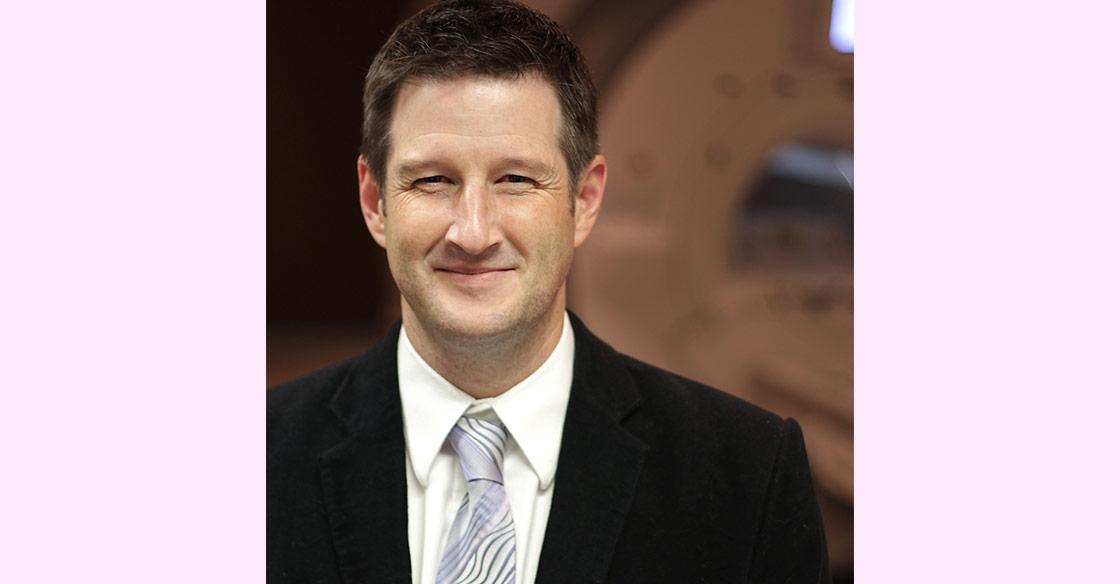
DR. STEVEN BEYEA
Scientific Lead, Biomedical Translational Imaging Centre (BIOTIC),
QEII Health Sciences Centre and IWK Health Centre
Through healthcare research, we have opportunities to improve our economy and at the same time, advance patient care right here at home.
Our health research ecosystem has the ability to compete with the best in the world by focusing on where we can provide value. Because we are a small province, we’re able to introduce new innovations, evaluate the impact on our patients and healthcare system, and make evidence-informed decisions. One example – a new 3T MRI – has had a major, compounding economic impact.
In 2014 the QEII Health Sciences Centre received a new 3T MRI, thanks to the QEII Foundation, who raised $3.1 million, including a $2.5-million gift from the Gauthier and David families. The cutting-edge imaging capability of the 3T MRI allows new clinical and research studies to move beyond what was previously possible in Nova Scotia.
The 3T MRI led to the development of a five-year research partnership with GE Healthcare. GE’s collaboration and investment in this research allowed us to demonstrate our ability to drive healthcare innovation with large-scale partners, compete on a global stage, and hire new researchers in areas such as artificial intelligence.
Because of our success with GE Healthcare, we’ve also attracted new partnerships such as Toronto’s Synaptive Medical, who are focused on a variety of medical devices for studying the brain. Synaptive Medical has developed the EvryTM MRI as a unique instrument designed to provide diagnostic information for patients arriving in the emergency department with acute neurological symptoms. EvryTM will be installed at the QEII in 2019. With Synaptive Medical themselves investing in our research, this collaborative partnership will allow us to be the first in the world to evaluate the potential impact of this new MRI.
If we were to wait for someone else to validate this technology, Nova Scotia’s health budget would later pay full market value if it is adopted as a standard of care. Instead, because we’re the early adopter, and both Synaptive Medical and various funding agencies are providing investment, early access to the technology benefits the healthcare system – and ultimately, patients – at very little cost to our healthcare budget.
Opportunities like the 3T MRI and the EvryTM MRI also attract international scientists and clinicians. People have moved here from as far away as Europe to work within our research centre. Having new, state-of-the-art technology also gives us the ability to train our students – our future healthcare providers and researchers – and provide them with opportunities to work here in Nova Scotia. Students trained in both clinical and industry environments are very attractive to industry partners who, when they want to grow their footprint in Nova Scotia, have a ready-made staff who already understand their company, research and commercialization.
Today, Nova Scotia is already home to a vibrant health and life science industry, with BioNova reporting that we have over 100 companies employing more than 1,500 employees and generating revenues in excess of CAD $300 million. With incredible opportunities to develop our own ideas and find those industry partners who can commercialize our innovations, providing revenues flowing back into our health system, we can drive medical innovation forward and maximize the economic impact to our province. And by helping our companies be successful and grow locally, we are simultaneously improving our healthcare system and supporting an already dynamic economic sector in our province.
Without research, there is no health care – but to take full advantage we must first begin by shifting our mindset to reimagining our health system as a positive economic force for our province’s future.
Article also shared on thechronicleherald.ca